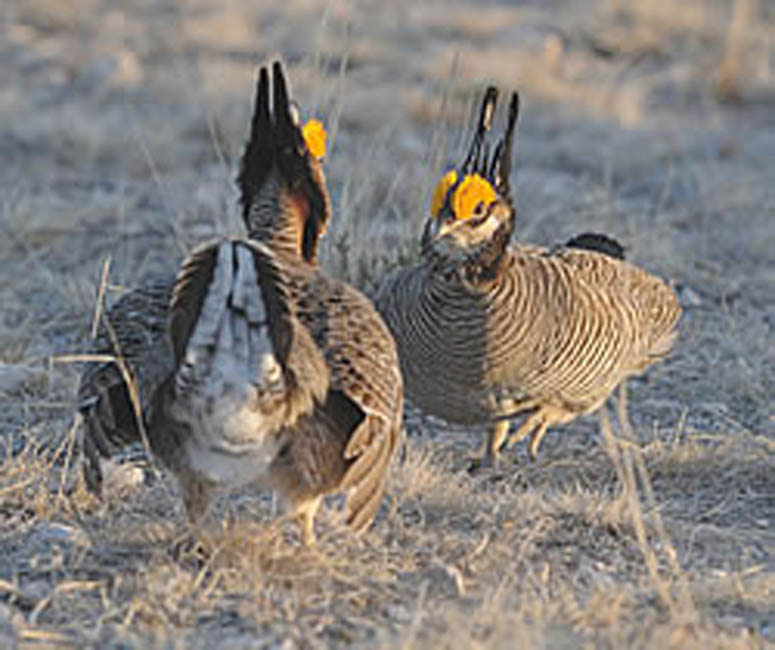
Agricultural News
Working Lands for Wildlife Seeks to Preserve Lesser Prairie Chicken
Fri, 01 Jun 2012 16:51:24 CDT

Landowners in northwestern Oklahoma and southern Kansas are being targeted for inclusion in a voluntary conservation effort to preserve habitat for the lesser prairie chicken.
Launched earlier this year, the $33 million Working Lands for Wildlife project is in its infancy. USDA Under Secretary Harris Sherman said the purpose of the program is to "help recover certain species at risk or threatened and endangered species that occur at various places across the U.S. And we try to do that while protecting ongoing farming and ranching operations where these species live."
The project focused on preserving the lesser prairie chicken in this area is also targeting six other species in different areas of the country. Its aim is to prevent those species from being placed on the list of endangered species which would result in mandatory sanctions from the U.S. Fish and Wildlife Service.
Efforts to aid the lesser prairie chicken have taken on greater urgency with the lifting of the bird to second place from eighth on the list of species to be added to the most-endangered listing.
Sherman said the program is a voluntary partnership between landowners, the Natural Resource Conservation Services and the U.S. Fish and Wildlife Service. The program also involves state governments, universities and non-governmental organizations.
In an effort to increase the population of the lesser prairie chicken and prevent the imposition of mandatory interventions, the Oklahoma Department of Wildlife Food and Forestry has undertaken its own projects to identify habitats across the western portions of the state which are most crucial to the prairie chicken.
"The goal of the program is to restore and enhance these species, to provide a certain degree of regulatory certainty to a landowner, a farmer or rancher in the event that a species is listed, to really work to strengthen rural economies through productive working lands."
Prairie chickens require large tracts of undisturbed land free of electric lines, towers and fences. These obstacles present deadly hazards for the birds and are disruptive to their mating rituals. Studies have shown the lesser prairie chicken will abandoned areas with vertical structures such as transmission towers, oil wells and wind turbines.
Sherman said the specific conservation practices recommended for the lesser prairie chicken are relatively simple and would make sense even if the birds weren't endangered.
"Some of the conservation practices would involve brush management. It might entail prescribed grazing. There are certain areas where we will try to do range land improvement. We work on restoration. We try to remove invasive species, so it's a laundry list of practices we know work. It brings habitat back and we know that it increases numbers of the bird," Sherman said.
There has been some pressure from environmental groups to have the U.S. Fish and Wildlife Service to declare the Lesser Prairie Chicken an. Sherman said he is not quite ready to throw in the towel.
"We've had very constructive-and I think positive-dialog with the U.S. Fish and Wildlife Service on all of these programs. The point is to get ahead of the curve, to be proactive and innovative so that we don't have to list these species. And it's a program where it's strictly voluntary. If a farmer-rancher will implement these voluntary practices, these are practices which have been approved by the U.S. Fish and Wildlife Service in conjunction with NRCS and if the farmer or rancher implements these practices, these practices are likely to meet any sort of future requirements that would be imposed by the Fish and Wildlife Service at a later point in time."
Sherman said work is already underway to sign up farmers for the program.
You can listen to Ron Hays speaking with Harris Sherman by clicking on the LISTEN BAR below.
WebReadyTM Powered by WireReady® NSI
Top Agricultural News
More Headlines...


















